HOUSEPLANTS IN THE CHARLOTTE AREA
Houseplants have been in vogue since the early Greeks and Romans. Even today, it is enjoying a surge in popularity owing to Instagram’s greenery-inspired and aesthetic interior designs.
Add beauty, comfort, and color to your office and homes by planting lush, green flowers. These plants absorb CO2 and boost oxygen levels to purify the air. This way, indoor plants ease tension, lower stress, and alleviate your mood. Read on to learn how indoor houseplants beautify your living space:
What are Indoor Houseplants?
An indoor houseplant refers to any plant grown indoors, including homes, residences, and offices. Houseplants encourage a better living and healthier environment and add humidity to your house.
Plus, they look beautiful and add a splash of color and liveliness to your home. Typically, indoor houseplants are of three primary types:
Low Light Indoor Houseplants
Low light indoor houseplants thrive in less light and include:
- Sansevieria
- Fern varieties
- Pothos
- Dieffenbachia
- Philodendrons
Mid Light Indoor Houseplants
Mid-light indoor houseplants require a temperate climate to survive and grow healthy. These plants include:
- Aglaonema
- Calathea
- Homalomena
- Ferns
High Light Indoor Houseplants
Bright light houseplants are excellent for rooms that receive excess sunlight. Some only thrive in direct sunlight, such as:
- Croton
- Cordyline
- Ficus
- Schefflera
- Alocasia
Reasons to Decorate Your House with Indoor Houseplants
Indoor plants are notorious for keeping you healthier, happier, and stress-free. The fact is that adding plants to your living space offers physical, mental, and emotional benefits, including:
Helps Reduce Stress Levels
An in-depth study in the Journal of Physiological Anthropology reveals that plants integrated within your living or working space make you feel relieved and comfortable.
The study involved two participants, each with a different task: one had to re-pot a houseplant, and the other had to complete a short assignment on their computer. After performing their tasks, the researcher measured their heart rate, blood pressure, and other factors associated with stress levels.
Their study found that indoor gardening helped lower stress and anxiety. However, the computer-based task caused more significant blood pressure and heart rate.
Boosts Your Mood
Indoor gardening is beneficial for people experiencing mental illnesses. A study about horticultural therapy reveals that it can boost the mood and well-being of individuals with anxiety, depression, dementia, and more.
As a result, various medical clinics across the globe now ‘prescribe’ potted plants to patients having symptoms of anxiety or depression.
Sharpens Your Focus
The succulent sitting on your desk can help you pass your exam. How? A study involving 23 individuals reveals that indoor plants can improve your focus and attention span.
In this study, participants stayed in different classrooms with either a real succulent, a fake plant, pictures of various plants, or no plants.
Researchers found that those studying with live plants were more attentive when looking at the students’ brain scans. So, planting indoor succulents helps you concentrate better.
Minimizes the Chances of Experiencing a Headache
In the 1980s, NASA provided scientific support for phytoremediation through in-depth study. The study helped identify ways to improve air quality within sealed spacecraft. As a result, researchers learned that indoor houseplants help reduce airborne volatile organic compounds.
Purchasing houseplants is the perfect way to freshen the air naturally, and it also reduces the chances of you experiencing headaches.
Makes Your Room Look Welcoming and Comfortable
Plants add a splash of color and liveliness to your living space. In addition, they can brighten and refresh your home.
Not just this, but plants can help reduce noise pollution, unattractive areas, and moderate room temperatures. Before integrating plants within your living space, take some time to picture how you want to feel and the aesthetic you want to achieve.
Improves Your Office Performance
Adding succulents to your home or office is an excellent way of improving productivity and performance. According to the University of Exeter research, employee productivity increased by an incredible 15% after integrating plants in their offices.
By introducing plants in your office, you can reduce stress and anxiety and improve well-being and calm. This way, you can boost your focus, creativity, and overall performance.
Gives You a Sense of Accomplishment
Planting an indoor plant, taking care of it, and watching it grow healthy gives you a sense of accomplishment. Research involving individuals in an assisted-living facility concluded that potting plants and taking care of them enhanced the quality of life.
According to researchers, these tasks offer people a sense of accomplishment and companionship. Potting a plant and nurturing it brings joy and freshens up your day.
Boosts Your Productivity
Adding plants to your workspace and home is an excellent yet simple way to increase productivity and creativity. An insightful study reveals that students performed 12% faster and experienced lower stress with live plants potted nearby.
In another study, participants had to develop creative word associations. The research concluded that people with a plant in their room performed comparatively better.
Thus, it’s apparent that potting plants within your home and office can improve your creativity and productivity.
Decreases Illnesses
Transpiration in outdoor plants accounts for more than 10% of moisture in our atmosphere. The same thing occurs within your house by indoor potting plants, which boosts humidity within your living space.
Research by the Agricultural University of Norway reveals that adding plants in your interior spaces decreases colds, coughs, sneezes, dry skin, and sore throats. Another study shows that high humidity ensures decreased survival and transmission of influenza.
Types of Indoor Plants You Should Plant
Indoor plants uplift, beautify, and brighten your living space. Here’s a list of must-have plants to enhance the overall appearance of your home or office:

Pygmy Date Palm
Pygmy date palm is a hassle-free, subtropical spreading palm that features arching leaflets. The plant grows up to six and a half feet high and five feet wide.
The pygmy date palm displays a trunk and leaves and is perfect for cooler climates. A bonus of potting this plant is that it produces edible drupes.
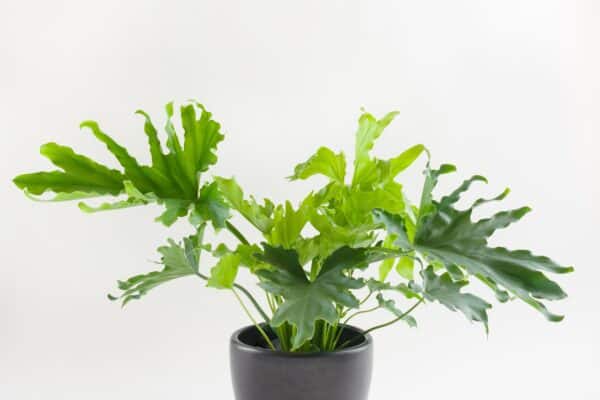
Philodendron Selloum
The word ‘philodendron’ comes from Greek and means’ love tree.’ These plants can withstand dark corners, sparse watering, and droughts.
Philodendron Selloum features dramatic, showy leaves and performs best in temperate climates.

Philodendron Xanadu
Philodendron Xanadu is an attractive plant with unique leaves forming at the ends of its stems. The plant can tolerate under-watering and shady corners.
To keep this beautiful plant shining and healthy, keep its compost moist between spring and autumn.
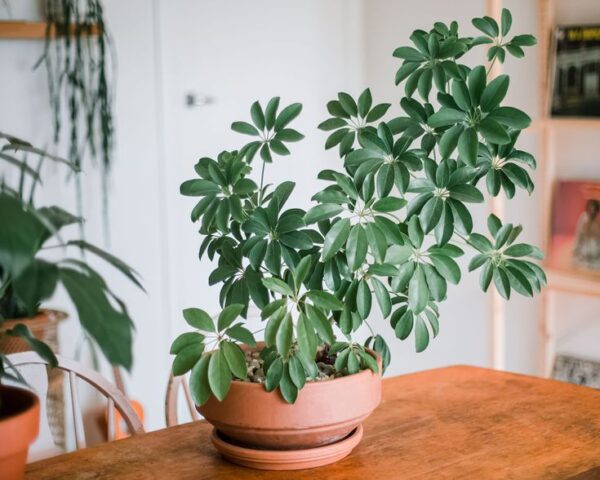
Schefflera Trinette
Schefflera Trinette is an easy-to-care-for houseplant displaying large patches of creamy yellow lightning.
The houseplant requires little maintenance and less light and water.
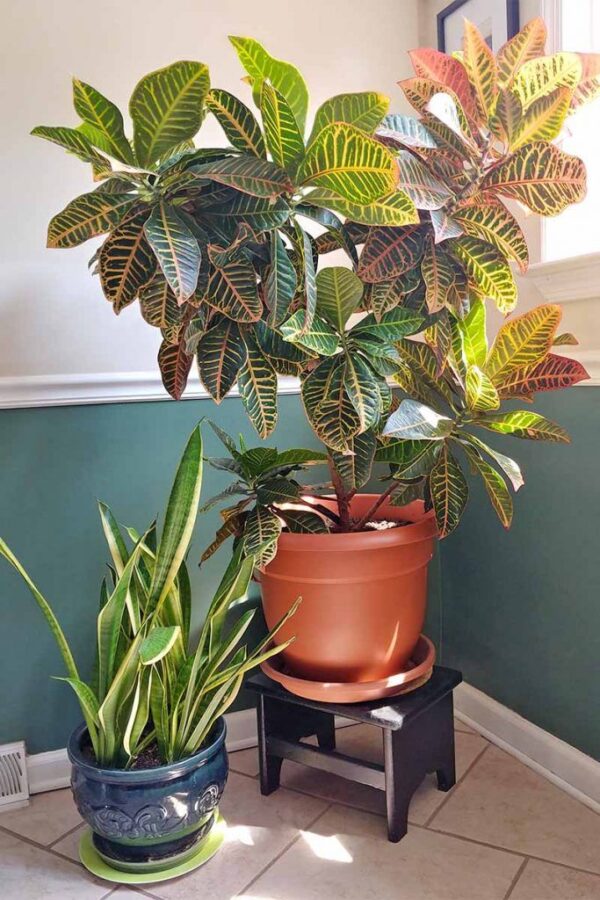
Croton
Croton is a small and attractive shrub perfect for tropical climates. The bushy shrub grows more than ten feet tall, and its large and thick leaves are up to two to 12-inches.
The plant requires a warm climate, less water, and adequate light.
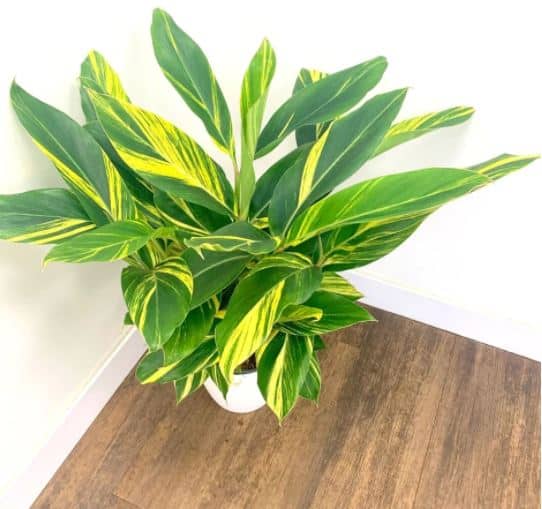
Variegated Ginger
Variegated ginger is an attractive plant featuring beautiful flowers and foliage. Its leaves grow in upright clumps that resemble culinary ginger.
The plant produces slightly arching stems with dark green leaves that grow up to two feet long.
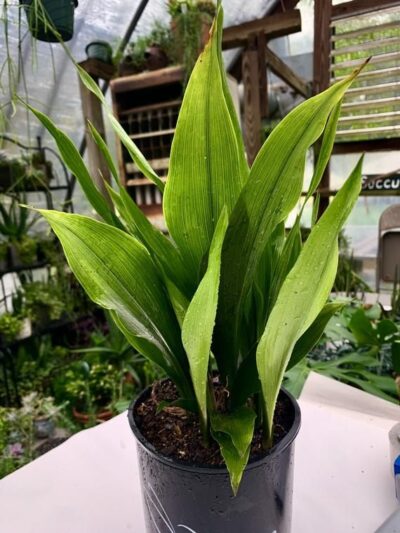
Dwarf Cast Iron
Dwarf cast-iron plants can survive in poor soil, low light, and under-watering. It means that this plant is a super durable and long-lasting indoor plant.
Its deep green, huge leaves add a pop of color to your home.
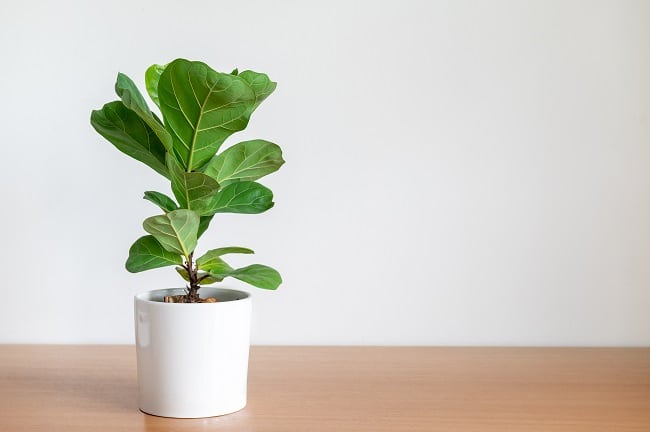
Fiddleleaf Fig
The fiddleleaf fig is an attractive indoor tree with huge, heavily veined, violin-shaped leaves. Ensure these plants grow healthy by giving them bright light and watering them when the soil is dry.
Place the fiddleleaf fid in the corner of your room to brighten your living space.

Avocado Tree
The avocado tree boasts elliptic and oval-shaped lasting between three to ten inches. It is an evergreen plant featuring small, greenish flowers and pear-shaped avocados.
Avocado trees thrive in a minimum of six hours of sunlight and can take quite a long time to start producing the fruit.
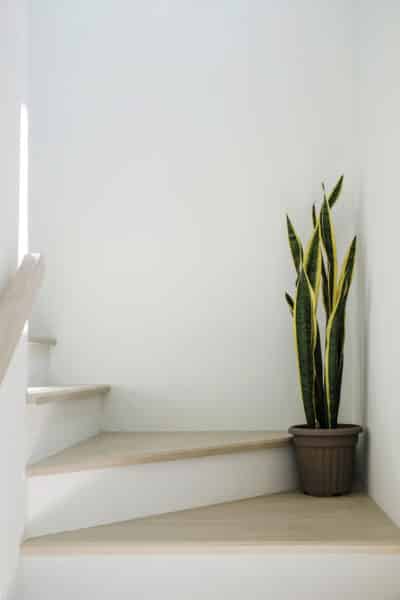
Snake Plant- Black Coral
The snake plant is a no-fuss and unique tropical plant featuring thin leaves with irregular banding. Its upright leaves resemble the skin of a reptile, thus its name.
Its ability to survive drought makes it an excellent indoor plant. In addition, this eccentric plant filters benzene, toluene, xylene, TCE, and formaldehyde.

Turmeric
Turmeric plants grow from a rhizome, i.e., the edible part of the plant. The plant features large, beautiful green leaves that extend more than three feet tall.
Typically, matured Turmeric plants boast attractive pink flowers. The plant thrives in humid conditions and neutral soil.
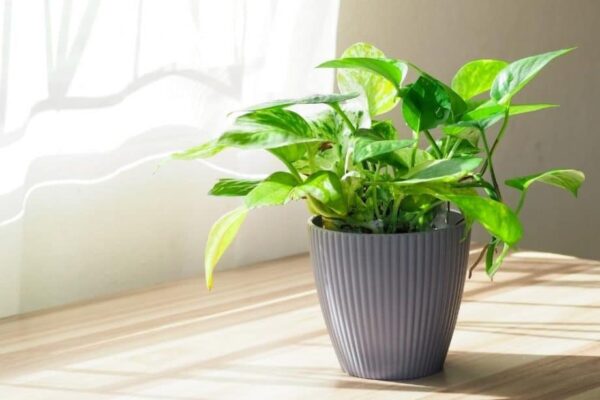
Pothos
Nickname the ‘devil’s ivy,’ this plant can withstand pitch-black conditions, under-watering, and over-watering. The plant boasts trailing vines that can grow longer than 10 feet.
Moreover, Pothos can filter toluene, benzene, xylene, and formaldehyde.

Succulents
Succulents are an excellent way to beautify your house with little work. Its thick, fleshy leaves require modest water and well-drained sandy soil.
These attractive plants can quickly adapt to indoor housing and drought conditions.
Tips and Tricks to Remember to Keep Your Indoor Houseplants Healthy
Here we’ve added tips and tricks to help you keep your indoor houseplants healthy:
Water Your Plants Daily
All plants have different watering requirements depending on their origin. Here’s what you need to remember when watering your plants:
- Keep the soil well-watered
- In case the soil is dry or overwatered, it can hinder the growth of the plant
- Under or overwatering can destroy particular types of plants. Indoor plants with lush, thick leaves require more water than those with leathery or waxy leaves
- Standing water present at the bottom of the container indicates that you have overwatered your plant
- Water your soil every time the plant’s leaves turns lighter or appear cracked
- Standing water kills your indoor plant, so pour it out as soon as you see it
Fertilize Your Houseplants
There’s no one-size-fits-all rule for fertilizing your plants. It depends on your desired plant’s age and growth rate, as well as the current season. Most potted plants experience a growth spurt during summer and spring, making it the best to fertilize them.
Like overwatering, overfertilizing can destroy your houseplants. It can burn its roots, stunt their growth, and cause its leaves to become cracked and broken.
Choose an Area that Receives Adequate Sunlight
Plants require adequate sunlight to prepare food, survive and thrive. However, the sun’s quality, intensity, and time needed can vary from plant to plant.
Keep your plants in a well-lit room that receives sunlight but avoid placing them under direct sunlight. Some plants can thrive in fluorescent lights as well.
Remember that flowering plants require between 12 to 16 hours of light every day, whereas foliage plants need 14 to 16 hours.
Consider Heat Sources
When picking the ideal position for your house plants, you also need to factor in temperature. House plants typically enjoy 20 degrees temperature, so avoid keeping them close to the radiator.
While most potted plants can tolerate temperature fluctuations, most tropical species crave consistency.
Avoid Moving Your Plants
Plants end up adapting to their surroundings; thus, you should avoid moving them around. And if you do want to move your plant, slowly adjust it to a new place.
Here’s how you can achieve that:
- Keep the plant in the new place for a couple of hours
- Repeat this while increasing the hours every day
- With time, your plant will adapt to its new environment
Keep Plants Together
Create your ideal tropical jungle environment by grouping similar types of plants together. These plants provide each other company, filter light for other plants, and encourage healthy growth.
Spruce up your home or office with lively, green indoor plants. These plants create a better living environment and improve air quality.
Reinvigorate your living space with the help of Cline’s Nursery. We provide customers with an endless collection of beautiful potted plants, and gardening tips and tricks.
Learn more about houseplant that are easy to maintain.
CONTACT US
Looking for a particular plant, tree or shrub? If we don’t have the color, quantity or size you need, we’ll get it for you quickly! Save time by letting us be your go-to source! Fill out the form below and a member of our staff will be in touch with you, or call us at 704-487-9861.
Error: Contact form not found.
HOURS
MONDAY – FRIDAY
8:30am ~ 5:00pm
SATURDAY
8:30am ~ 2:00pm
SUNDAY
Closed
